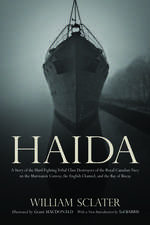Love Canal: A Toxic History from Colonial Times to the Present
Autor Richard S. Newmanen Limba Engleză Hardback – 26 mai 2016
| Toate formatele și edițiile | Preț | Express |
|---|---|---|
| Paperback (1) | 174.95 lei 31-37 zile | |
| Oxford University Press – 6 dec 2019 | 174.95 lei 31-37 zile | |
| Hardback (1) | 233.16 lei 31-37 zile | |
| Oxford University Press – 26 mai 2016 | 233.16 lei 31-37 zile |
Preț: 233.16 lei
Preț vechi: 264.71 lei
-12% Nou
Puncte Express: 350
Preț estimativ în valută:
44.64€ • 46.57$ • 37.42£
44.64€ • 46.57$ • 37.42£
Carte tipărită la comandă
Livrare economică 01-07 martie
Preluare comenzi: 021 569.72.76
Specificații
ISBN-13: 9780195374834
ISBN-10: 0195374835
Pagini: 328
Ilustrații: 25 hts
Dimensiuni: 155 x 239 x 25 mm
Greutate: 0.59 kg
Editura: Oxford University Press
Colecția OUP USA
Locul publicării:New York, United States
ISBN-10: 0195374835
Pagini: 328
Ilustrații: 25 hts
Dimensiuni: 155 x 239 x 25 mm
Greutate: 0.59 kg
Editura: Oxford University Press
Colecția OUP USA
Locul publicării:New York, United States
Recenzii
[T]his legacy of Love Canal may provide redemption and hope.
Newman's narrative is more complete than any that has come before. He makes excellent use of rich source material
Richard S. Newman, in his Love Canal: A Toxic History from Colonial Times to the Present, manages to retell the story in a way that is fresh and imbues Love Canal, as place and symbol, with new importance for understanding the history of citizen activism, environmentalism, and environmental regulation in the United States ... essential reading.
Newman's narrative is more complete than any that has come before. He makes excellent use of rich source material
Richard S. Newman, in his Love Canal: A Toxic History from Colonial Times to the Present, manages to retell the story in a way that is fresh and imbues Love Canal, as place and symbol, with new importance for understanding the history of citizen activism, environmentalism, and environmental regulation in the United States ... essential reading.
Notă biografică
Richard S. Newman is Professor of History at Rochester Institute of Technology. A native of Buffalo, New York, he is the author and/or editor of five previous books on abolitionism, African American history, and environmentalism, including The Palgrave Environmental Reader and Freedom's Prophet: Bishop Richard Allen, the AME Church, and the Black Founding Fathers. For fifteen years, he taught environmental history at Rochester Institute of Technology.








